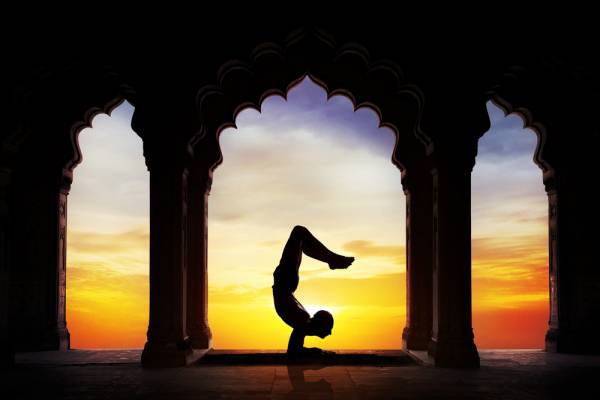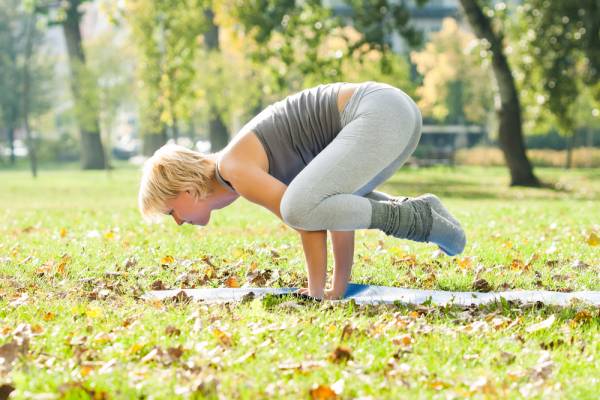To be honest I don’t even like using the term “real yogi.” Who am I to determine who and what a real yogi is. I’m using it as a counter to the all-too-prevalent idea that a so-called real yogi doesn’t need to use yoga props.
As a teacher now for over five years (which I realize is not a long time compared to many teachers), I have a little charge about this. My tongue-in-cheek rendition of the famous “you can lead a horse to water” proverb is: you can lead a person to a yoga mat, but you cannot make them breathe or use props. Breathing is a topic for another time. For now we stick with props.
Myth: Advanced Students Never Used Props
I cannot count the number of times I have taken the initiative to get blocks for a student who was struggling to touch the floor. But when I put the blocks right next to the student’s hands, he or she ignores them and continues to struggle – all the while reinforcing long-standing, bad habits because somehow he or she is convinced that using a prop is a bad thing.
I’m not sure where this notion started, but I suspect part of it originates with beginning yoga students going into a mixed or advanced level class and seeing what other people are doing. In that scenario, many students are likely to be doing some advanced poses without the need for or use of props. Taking this in, the beginner believes that it’s not cool or makes them a less-than or even bad yogi if they use a prop here and there. What we forget is that those people kicking up into advanced inversions and arm balances most certainly used some type of support along the way in order to get to where they are now.
Myth: Real Yogis Never Used Props
Other students might pick up this notion from a teacher. I have had one or two teachers discourage a class from using props based on the idea that the early practitioners of yoga didn’t use them – i.e. “real yogis don’t use props.” I haven’t found information to confirm this assertion, but I do know that the way yoga was taught in the East was much different than present day Western methods. It was common for a student to work one-on-one with a yoga master. The process was slow, methodical, and tailored to the individual student, and equal attention was given to all eight limbs of yoga.
This kind of process would prepare the student mentally and physically each step of the way, so that by the time the student reached certain poses he would not need the support of a prop. This makes sense, but fast-forward to now – where we have anywhere from ten to a hundred students with mixed levels of experience in a class with only one teacher. It’s natural that the beginners are going to look to the more advanced students, strive to emulate them, and judge their own practice according to that standard. One teacher can’t possibly see everything going on in a room of multiple students in order to give the guidance needed. You can see how this is different and how props come into play.

How Alison Got Her Crow Back
Now for my confessional and what prompted me to write this. Recently, I lost my crow. Yes, tragic, I know, but I did. Bakasana – as the Sanskrit name has it – escaped me.
I kind of ignored the situation at first, going about my practice as usual, hoping that somehow magically when the teacher called out for crow pose, mine would just come back to me. My ego was very attached to the idea that I knew this pose and that was that.
Well after about six months of this with no change, I started a little self-examination. Self-examination is never initiated by the ego, so this new focus gave me hope that my heart was now taking the lead so I could expand and actually learn something new. And that’s exactly what happened.
For about five weeks or so, I practiced bakasana every day, everywhere – at home or in classes, and using blocks and straps in various ways. I also explored using different surfaces – the grass in the park when walking our dog, the sidewalk during a little pause in my run, the tile in our house, even the rocky hiking trail. Each exploration taught me something new. And, lo and behold, today I once again have my crow!
Okay, so that’s pretty awesome, but not what this is actually about. Any yoga pose may come and go, but the qualities of character that go into the seeking and finding are what really matter and cross over into all areas of life.

The Way You Do Yoga Is the Way You Do Everything
This is why I’ve become so passionate about encouraging the use of props. I understand that the way you do anything is the way you do everything. So, if someone isn’t willing to give him- or herself the support needed in yoga practice, chances are other areas in his or her life are suffering from the same tendency.
If we look at the eight limbs of yoga, we find only encouragement towards actively seeking and accepting that which supports us in expanding and thriving, not only in our asana practice, but in our lives. Using props as we do today comes thanks to the work of B.K.S. Iyengar and helps the body and mind in many ways. If we feel supported, our body is more likely to relax and open, whereas straining to reach the floor or touch our toes causes the muscles to tense, stiffen, and contract.
Props help our bodies find the most resourceful alignment, which over time creates muscle memory that stays with us – even after the prop is removed. All of this contributes to an expanded self-awareness and an expanded asana practice that’s grounded, balanced, and creative. What more could we ask for?
So, please, if you’re reading this: the next time you’re offered a yoga prop, accept it! And better yet, don’t wait until it’s offered. Actively seek out the way using a prop could help you. Yoga teachers get so much pushback when it comes to props, that we are ecstatic when a student proactively asks us for one. And the really cool thing is that when you have the courage to use a prop, you almost always give someone else in the room permission to do the same. This is a win-win-win situation!
Above all, remember if there is such a thing as a real yogi, he or she would most certainly use props because real yogis are humble, committed to expanding, and love letting go of old habits.
Photos courtesy of Shutterstock.






